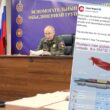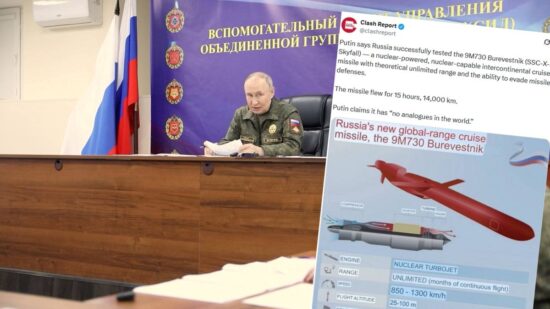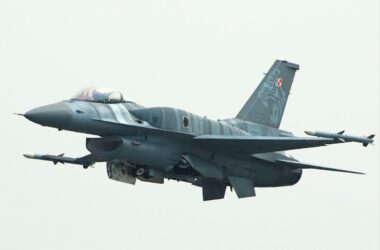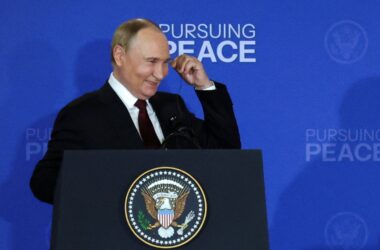On 21 October, Russia demonstrated the SSC‑X‑9 Skyfall nuclear‑powered ballistic missile, claiming it could travel 14,000 km and remain airborne for 15 hours.
Missile Specs and Performance
Russia’s Burewistek, known in NATO circles as the SSC‑X‑9 Skyfall, is portrayed as indestructible and capable of penetrating any defense shield. The missile’s flight was recorded several days after nuclear exercises, with the highest‑ranking military officer, Chief of Staff General Valery Gerasimov, reporting that it covered approximately 14,000 km and stayed aloft for about 15 hours.
Reports highlighted the ongoing construction of the missile system, indicating that Russia is already advancing the technology toward operational deployment.
Putin on Nuclear Deterrence
Russian President Vladimir Putin described the new weapon as “unique, an asset no other country possesses.” He said the modernity of Russia’s nuclear deterrent is at the highest level, surpassing any other nuclear power.
Putin added that “there is still work to bring this system into active service, but the key tasks have already been completed.” He traced the program’s origins to 2018, positioning it as a response to U.S. actions in 2001 that began developing a global missile‑defense shield.
Ukrainian Tomahawk Talks and U.S. Response
Ukrainian President Volodymyr Zelensky emphasized that Tomahawk cruise missiles would substantially boost Ukraine’s war efforts. However, former U.S. President Donald Trump ultimately declined to ship them, arguing that the United States also needs such missiles and that it would take at least six months, typically a year, to train personnel.
The Trump administration also announced a new sanctions package against Russia, citing Kremlin inaction in the peace process toward ending the war in Ukraine.
U.S. Sanctions on Russia
The sanctions target Russia’s two largest oil companies, Rosneft and Lukoil, and dozens of associated subsidiaries, marking a significant escalation in economic pressure.








